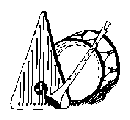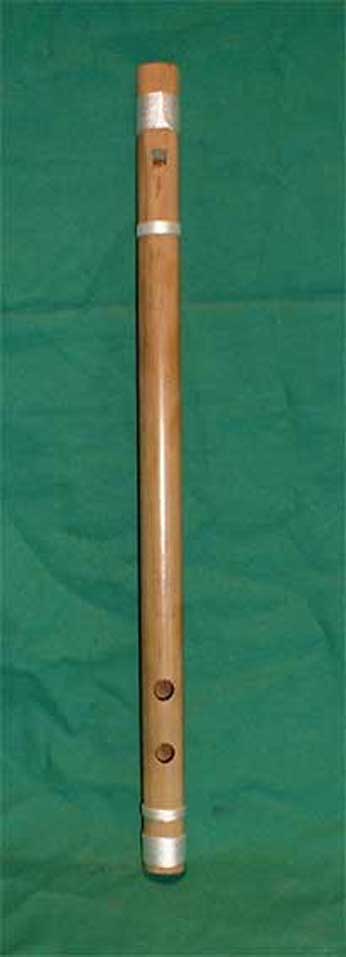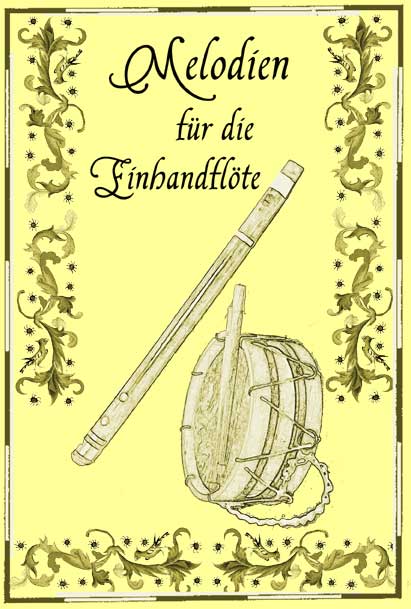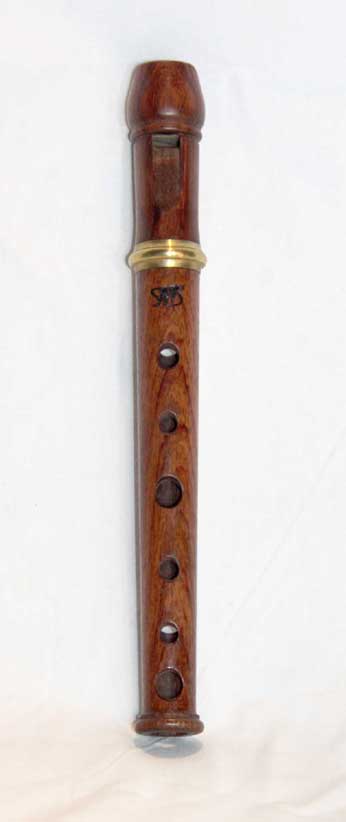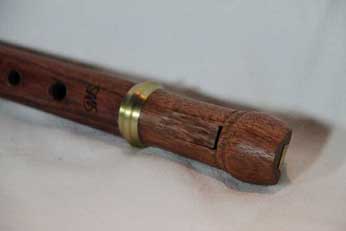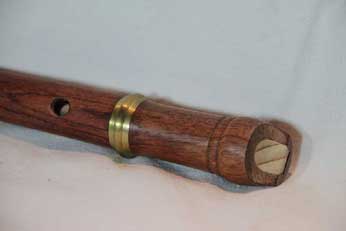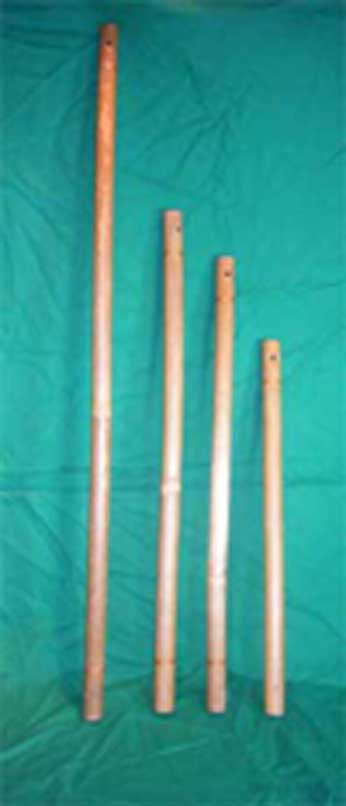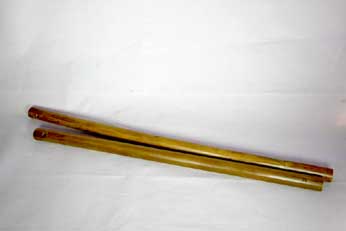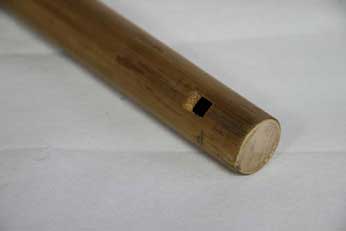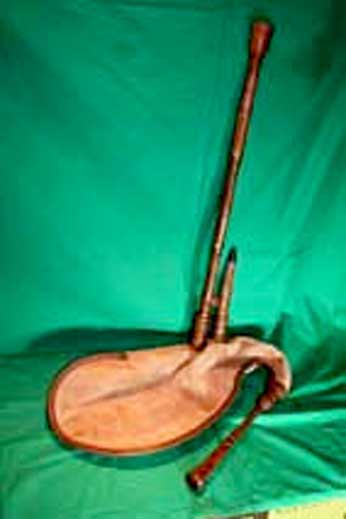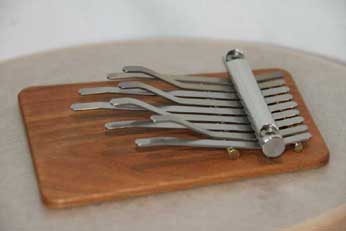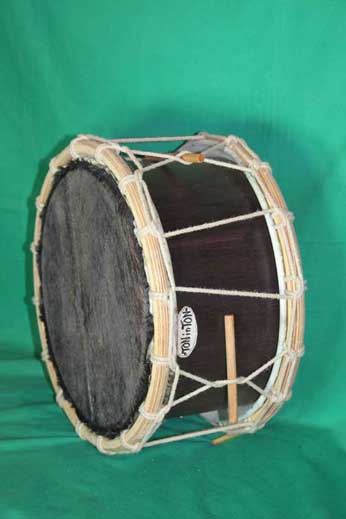Einhandflöte, Obertonflöte
Einhandflöte, Tabor pipe, Obertonflöte
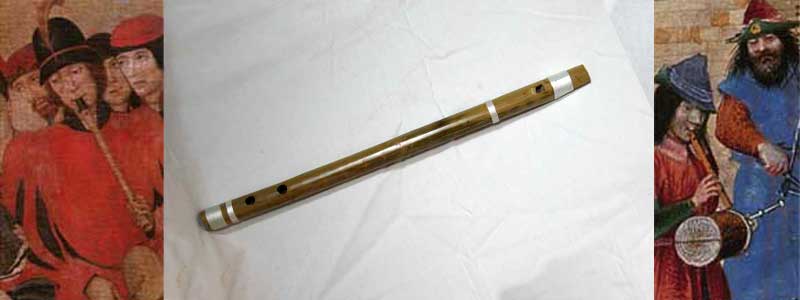
- Einhandflöte - einfache 3-Lochflöte
- Melodien für die Einhandflöte
- Flaviol - professionelle Einhandflöte aus Spanien
- Obertonflöte - ohne Fingerlöcher
Die zylindrischen Flöten aus Schilfrohr lassen sich aufgrund ihrer Bauart sehr gut überblasen. So kann man z.B. auf den tiefsten Ton, wenn alle Fingerlöcher geschlossen sind, mindestens 4 verschiedene Töne spielen in dem man unterschiedlich kräftig in die Flöte hinein bläst. So entstehen die Obertöne auf dem Grundton.
Diese Eigenschaft macht sich die Einhandflöte zunutze.
Die Obertonreihe baut sich so auf, das zwischen dem zweiten und dem dritten Überblaston eine Quint also ein Fünfton-Intervall, liegt. Es werden dabei drei Töne der Tonleiter übersprungen. Um dies auszugleichen hat die Einhandflöte 3 Fingerlöcher. Zwei für Zeige- und Mittelfinger auf der Oberseite und ein Loch für den Daumen auf der Unterseite. Zwischen Ringfinger und kleinem Finger kann die Flöte am Fuss gehalten werden. Durch weiteres Überblasen kann insgesamt eine Oktave, manchmal auch noch die None, ein Ton mehr, gespielt werden.
Im Mittelalter, als der Spielmann oft ein Einzelmusiker war und zum Tanzen aufspielen sollte, bot sich diese Flöte an, da man gleichzeitig zur Flöte auch noch mit der freien Hand einen Rhythmus schlagen kann.
Verzichtet man auch noch auf diese 3 Fingerlöcher hat man eine Obertonflöte. Diese spielt nur die Obertöne auf den Grundton. Wobei man noch durch Schließen der Flöte am unteren Ende Zwischentöne erzeugen kann. Obertonflöten werden als Rhythmische Begleitung und in Improvisationen gespielt.
Einhandflöte
Eine Flöte mit 3 Fingerlöchern, die mit einer Hand gespielt werden kann. Durch Überblastöne kann man eine Oktave spielen.
Die Einhandflöte hat nur drei Löcher, trotzdem lässt sich eine ganze Oktave darauf spielen.
Die Flöte wird am unteren Ende mit Ringfinger und kleinem Finger gehalten. Zeigefinger und Mittelfinger sowie Daumen spielen auf den drei Löchern.
Die verschiedenen Töne werden durch unterschiedlichen Luftdruck erreicht.
Schliesst man alle Löcher, kann man mit verschieden starkem Luftdruck vier verschiedene Töne spielen:
Grundton
1. Überblaston, Oktave
2. Überblaston, Quint
3. Überblaston, 2. Oktave.
Die Zwischentöne um eine Tonleiter zu spielen erzeugt man durch verschiedene Griffe.
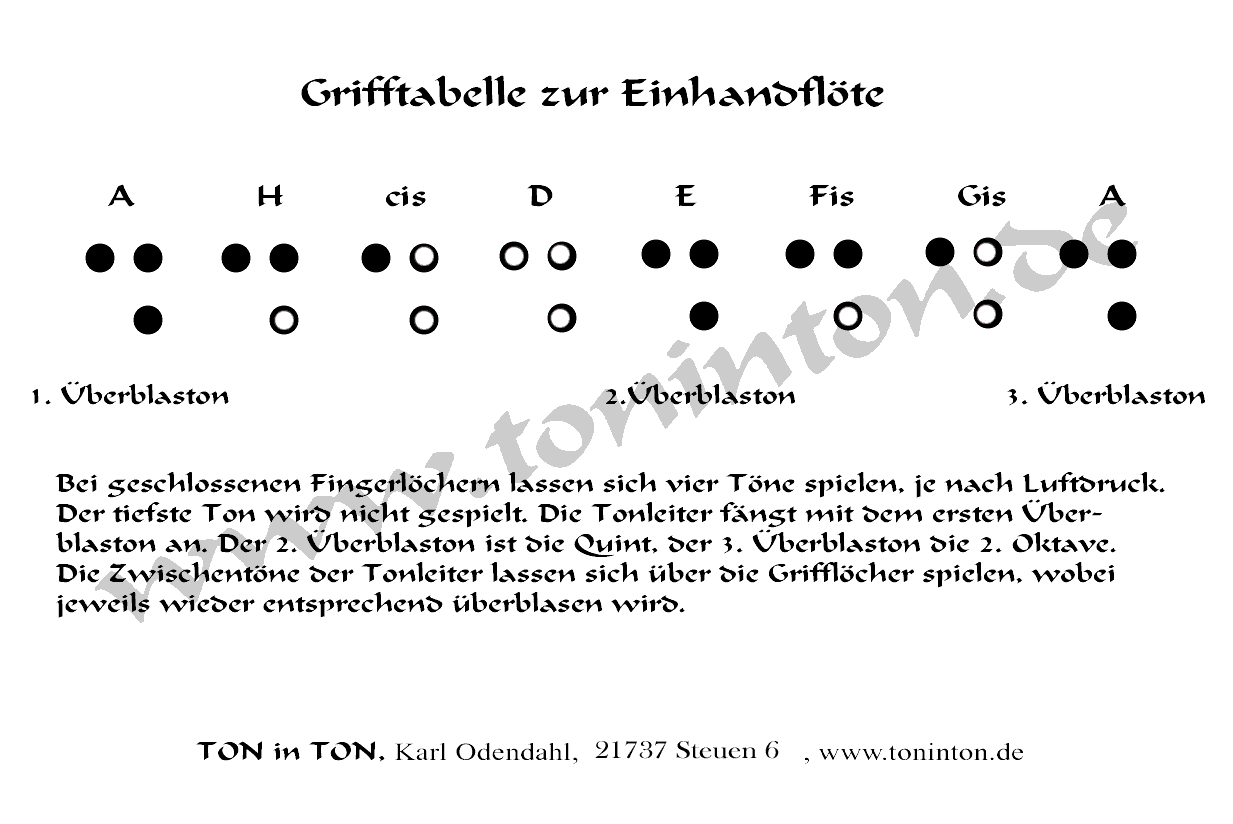 ×
×
Die Flöten sind aus Schilfrohr in der Tonlage A.
Melodien für die Einhandflöte
Zur Einhandflöte bieten wir jetzt auch ein Melodienbuch mit 40 Melodien an. Kinderlieder, Tänze, traditionelle Melodien und Weihnachtslieder speziell für die Einhandflöte ausgesucht und bearbeitet. Natürlich sind die Melodien auch mit anderen Instrumenten spielbar.
Flaviol
Eine besondere Einhandflöte ist die Flabiol aus Katalonien/Spanien.
Sie hat nicht nur 3 Löcher sondern insgesamt 7 Löcher.
Dabei deckt die linke Hand mit Zeige-, Mittel- und Ringfinger die drei oberen Löcher auf der Vorderseite und mit Daumen und kleinem Finger zwei Löcher auf der Rückseite ab. Somit können mit der linken Hand die Töne vom E bis zum hohen D (fast 2 Oktaven) gespielt werden.
Die rechte Hand kann zusätzlich die tiefen Töne D und C über die unteren 3 Löcher spielen.
Somit sind 2 volle Oktaven auch chromatisch spielbar.
Die Flabiol ist aus Bubinga-Holz gefertigt.
Obertonflöte
eine Flöte ohne Fingerlöcher, sie erzeugt durch überblasen die Obertöne zum Grundton
Die Obertonflöte hat ein Mundstück wie eine Blockflöte, aber keine Löcher für die Finger.
Verschiedene Töne werden durch unterschiedlichen Blasdruck erzeugt.
So lässt sich der Grundton mehrfach überblasen.
Ausserdem lässt sich die Luftsäule durch Schliessen des Rohres verändern. Dadurch ist auch ein Trillerspiel möglich.
Wir haben die Obertonflöte in 3 verschiedenen Tonarten: F, D und C
